

Five fascinating questions physicists are seeking to answer. From Copernicus to Einstein, the field of Physics has changed drastically over time.
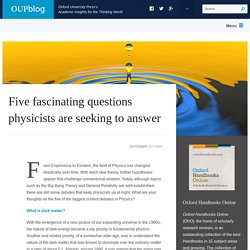
With each new theory, further hypotheses appear that challenge conventional wisdom. Today, although topics such as the Big Bang Theory and General Relativity are well-established, there are still some debates that keep physicists up at night. "A 'Time Machine' That Moves Greater Than Speed of Light Allowing It to Travel Back and Forward in Time" - The Daily Galaxy. After some serious number crunching, a University of British Columbia researcher has come up with a mathematical model for a viable time machine --a bubble of space-time geometry which carries its contents backward and forwards through space and time as it tours a large circular path.
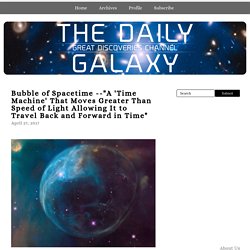
The bubble moves through space-time at speeds greater than the speed of light at times, allowing it to move backward in time. Ben Tippett, a mathematics and physics instructor, whose field of expertise is Einstein's theory of general relativity, studies black holes and science fiction when he's not teaching. Using math and physics, he has created a formula that describes a method for time travel. "People think of time travel as something as fiction," says Tippett. "And we tend to think it's not possible because we don't actually do it. The division of space into three dimensions, with time in a separate dimension by itself, is incorrect, says Tippett. The Daily Galaxy via University of British Columbia. Simulation suggests 68 percent of the universe may not actually exist.
According to the Lambda Cold Dark Matter (Lambda-CDM) model, which is the current accepted standard for how the universe began and evolved, the ordinary matter we encounter every day only makes up around five percent of the universe's density, with dark matter comprising 27 percent, and the remaining 68 percent made up of dark energy, a so-far theoretical force driving the expansion of the universe.
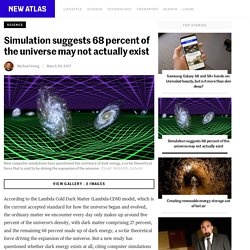
Mind-Blowing New Theory Connects Black Holes, Dark Matter, and Gravitational Waves. Astronomers Have a Plan to Slow Down a Spacecraft When it Gets to Our Neighboring Star. Planetary Habitability Laboratory/University of Puerto Rico at Arecibo The Breakthrough Starshot Initiative, announced by billionaire Yuri Milner last April with support from Stephen Hawking and Mark Zuckerberg, proposes to send a tiny spacecraft to the Alpha Centauri system, our closest neighboring stars.
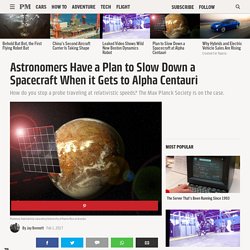
Frontier of Physics: Interactive Map. Huffingtonpost. 'Nuclear Pasta' in Neutron Stars: New Type of Matter Found. A rare state of matter dubbed "nuclear pasta" appears to exist only inside ultra-dense objects called neutron stars, astronomers say.
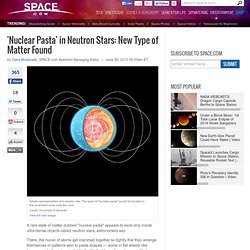
There, the nuclei of atoms get crammed together so tightly that they arrange themselves in patterns akin to pasta shapes — some in flat sheets like lasagna and others in spirals like fusilli. And these formations are likely responsible for limiting the maximum rotation speed of these stars, according to a new study. "Such conditions are only reached in neutron stars, the most dense objects in the universe besides black holes," said astronomer José Pons of Alicante University in Spain.
[The Top 10 Star Mysteries Ever] This new phase of matter had been proposed by theorists years ago, but was never experimentally verified. Star Quiz: Test Your Stellar Smarts. Alexander B Fry – On dark matter. I’m sitting at my desk at the University of Washington trying to conserve energy.
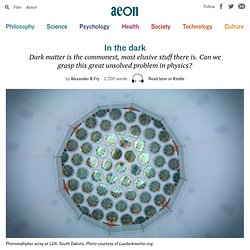
It isn’t me who's losing it; it’s my computer simulations. Actually, colleagues down the hall might say I was losing it as well. When I tell people I’m working on speculative theories about dark matter, they start to speculate about me. Mosh Pit Math: Physicists Analyze Rowdy Crowd. Hide captionFans in the mosh pit during the performance of Liturgy at the 2012 Pitchfork Music Festival in Union Park, Chicago, on July 14, 2012.
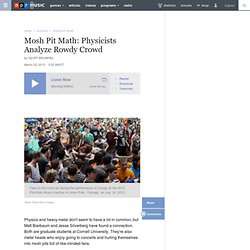
Roger Kisby/Getty Images Fans in the mosh pit during the performance of Liturgy at the 2012 Pitchfork Music Festival in Union Park, Chicago, on July 14, 2012. Physics and heavy metal don't seem to have a lot in common, but Matt Bierbaum and Jesse Silverberg have found a connection. Both are graduate students at Cornell University. LHC proton-lead collisions may have created new form of matter. In September, the Large Hadron Collider (LHC) was being tuned to enable it to study proton-lead nucleus collisions for a data run next year.
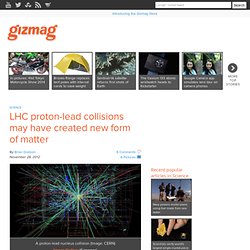
Eventually it ran and data was collected on the collisions for a period of four hours. Dark Matter Direct Detection Experiments. The hiding spots for the particles making up dark matter are narrowing, and the answer to this cosmic mystery could come within the next three or four years, scientists say.
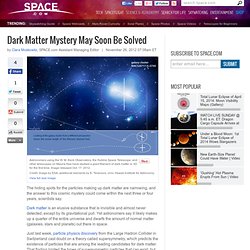
Dark matter is an elusive substance that is invisible and almost never detected, except by its gravitational pull. Yet astronomers say it likely makes up a quarter of the entire universe and dwarfs the amount of normal matter (galaxies, stars and planets) out there in space. Www.nada.kth.se/~asa/dysonFAQ.html. What is a Dyson Sphere?
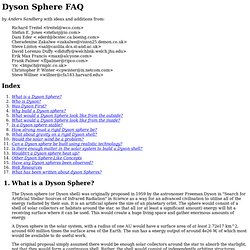
The Dyson sphere (or Dyson shell) was originally proposed in 1959 by the astronomer Freeman Dyson in "Search for Artificial Stellar Sources of Infrared Radiation" in Science as a way for an advanced civilisation to utilise all of the energy radiated by their sun. Science & God: Will Biology, Astronomy, Physics Rule Out Existence Of Deity? By: Natalie Wolchover Published: 09/18/2012 07:59 AM EDT on Lifes Little Mysteries. Who ordered that? An unexpected new particle shakes the Standard Model.
High-energy particle collision similar to those which may be giving us a glimpse of a new light boson outside the Standard Model (Image: Shutterstock) Image Gallery (2 images) In the mid-1930s, physicists thought they knew all the subatomic particles of nature – the proton, neutron, and electron of the atom. However, in 1936 the muon was discovered – a new particle having such surprising properties that Nobel laureate I.I. Rabi quipped, "who ordered that? " The Universe in a Nutshell: Michio Kaku on the Physics of Everything. 579 - A 1939 Map of Physics. Geography was my favourite subject in school; physics the one I disliked the most.